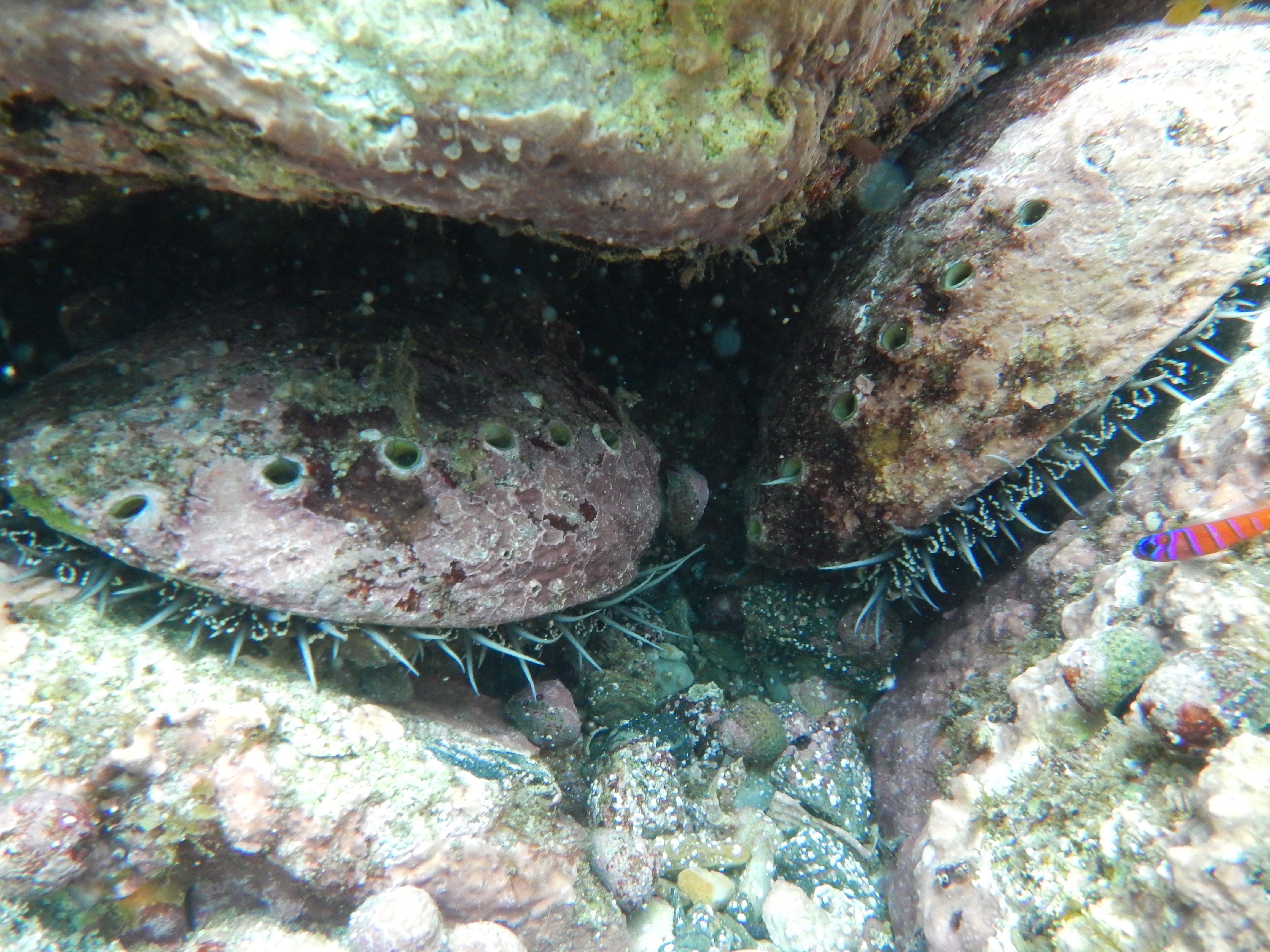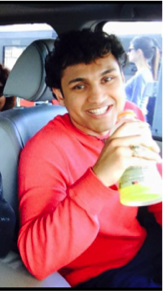By: Alexis Estrada
Hi, my name is Alexis Estrada and I am a graduate student in Dr. Mark Steele’s lab at California State University, Northridge where I conduct field based research in marine ecology. I am interested in factors that could be affecting the population structure and recovery of the green abalone population at Santa Catalina Island. Increasing abundance of green abalone at Santa Catalina Island provides a unique opportunity to examine the basic ecology of a species that was once prominent on coastal rocky reefs and important in both commercial and recreation fisheries in California.
My research examines key habitat for green abalone to determine adult density at the island, gaining a better understanding of the movement and aggregation of adults, and gaining a baseline estimate of recruitment (addition of new individuals to the population). I began my last field season at Santa Catalina Island, and will be working on all three aspects of my project. To conduct my research I SCUBA dive at several sites around the island counting abalone, collecting recruits, and this summer I will be tagging adult green abalone underwater.
I started off this summer field season as a Wrigley Institute Summer Fellow by doing some recruitment work looking for recently settled abalone recruits on the rocky reef and abalone larvae in the water column. Green abalone start their lives in the plankton, starting as eggs and continue developing through several larval stages of before finally settling onto rocky reefs. Recently settled green abalone are very small individuals that are about the size of a grain of sand. Because they are so small, we collect small boulders and cobbles from the rocky reef and gently scrub them in buckets of seawater which we filter through a fine mesh sieve to collect any recently settled abalone that were brushed off. Whatever is left on the mesh is washed into a sample jar that we can later sort through under a microscope.
Green abalone larvae are found in the water column. Using a similar sieving method, we can collect abalone larvae by towing a net made of very fine mesh behind a small boat to sample water at varying depths. Everything that was collected in the net can be collected into a sample jar for sorting under a microscope.
I am sampling for green abalone larvae and recently settled individuals every month from May until November which covers what is previously known to be the reproductive season. Abalone are broadcast spawners and reproduce when males and females emit their sperm and eggs respectively into the water column where they must mix for successful fertilization to occur. This means that individuals need to be relatively close to one another for fertilization to occur and successfully reproduce. Individual growth rates of abalone after fertilization is very predictable. By collecting recruits, I aim to back date the time of spawning based on sizes of recruits and larvae. I am hoping that by looking at recruitment patterns in green abalone we will be able to better understand the spawning season and be able to determine when spawning is taking place by identifying when recruitment is peaking.
In-between recruitment sampling I will begin SCUBA surveys to identify key habitats of adult green abalone and I will start tagging adults to track their movement and aggregation. Stay tuned for more exciting research with green abalone!








